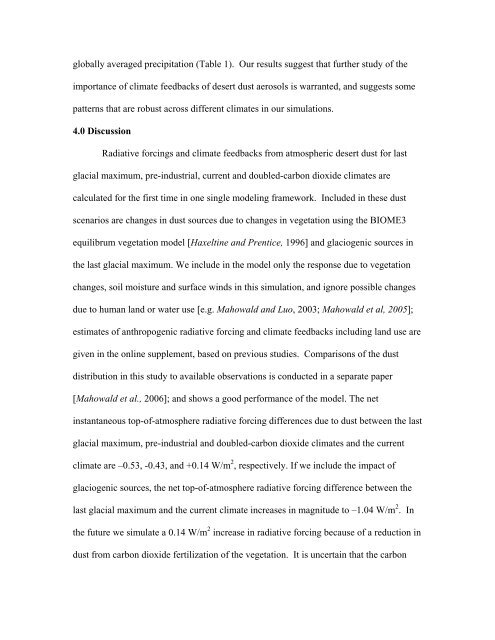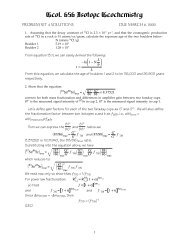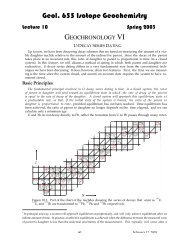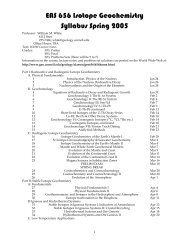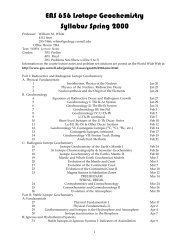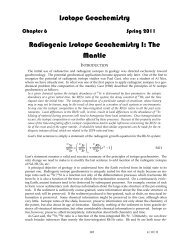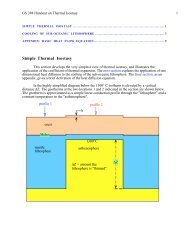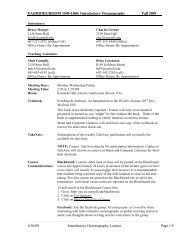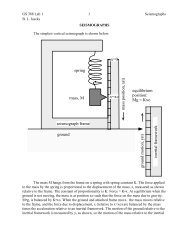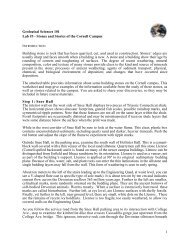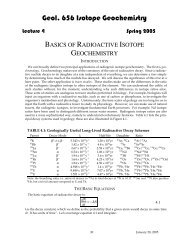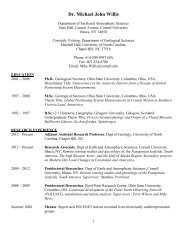Mahowald et al 2006
Mahowald et al 2006
Mahowald et al 2006
Create successful ePaper yourself
Turn your PDF publications into a flip-book with our unique Google optimized e-Paper software.
glob<strong>al</strong>ly averaged precipitation (Table 1). Our results suggest that further study of theimportance of climate feedbacks of desert dust aerosols is warranted, and suggests somepatterns that are robust across different climates in our simulations.4.0 DiscussionRadiative forcings and climate feedbacks from atmospheric desert dust for lastglaci<strong>al</strong> maximum, pre-industri<strong>al</strong>, current and doubled-carbon dioxide climates arec<strong>al</strong>culated for the first time in one single modeling framework. Included in these dustscenarios are changes in dust sources due to changes in veg<strong>et</strong>ation using the BIOME3equilibrum veg<strong>et</strong>ation model [Haxeltine and Prentice, 1996] and glaciogenic sources inthe last glaci<strong>al</strong> maximum. We include in the model only the response due to veg<strong>et</strong>ationchanges, soil moisture and surface winds in this simulation, and ignore possible changesdue to human land or water use [e.g. <strong>Mahow<strong>al</strong>d</strong> and Luo, 2003; <strong>Mahow<strong>al</strong>d</strong> <strong>et</strong> <strong>al</strong>, 2005];estimates of anthropogenic radiative forcing and climate feedbacks including land use aregiven in the online supplement, based on previous studies. Comparisons of the dustdistribution in this study to available observations is conducted in a separate paper[<strong>Mahow<strong>al</strong>d</strong> <strong>et</strong> <strong>al</strong>., <strong>2006</strong>]; and shows a good performance of the model. The n<strong>et</strong>instantaneous top-of-atmosphere radiative forcing differences due to dust b<strong>et</strong>ween the lastglaci<strong>al</strong> maximum, pre-industri<strong>al</strong> and doubled-carbon dioxide climates and the currentclimate are –0.53, -0.43, and +0.14 W/m 2 , respectively. If we include the impact ofglaciogenic sources, the n<strong>et</strong> top-of-atmosphere radiative forcing difference b<strong>et</strong>ween thelast glaci<strong>al</strong> maximum and the current climate increases in magnitude to –1.04 W/m 2 . Inthe future we simulate a 0.14 W/m 2 increase in radiative forcing because of a reduction indust from carbon dioxide fertilization of the veg<strong>et</strong>ation. It is uncertain that the carbon


